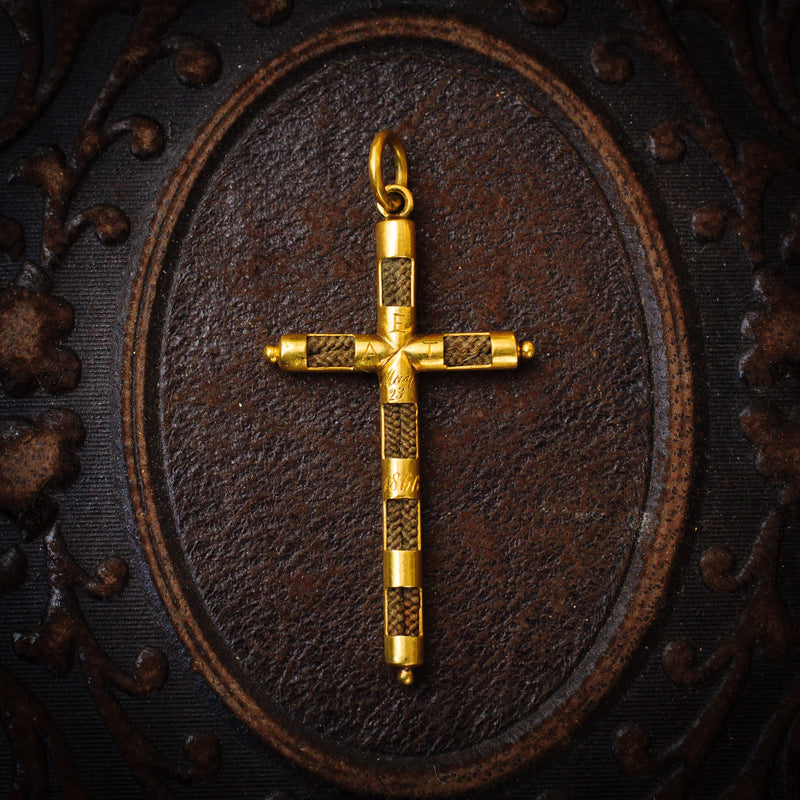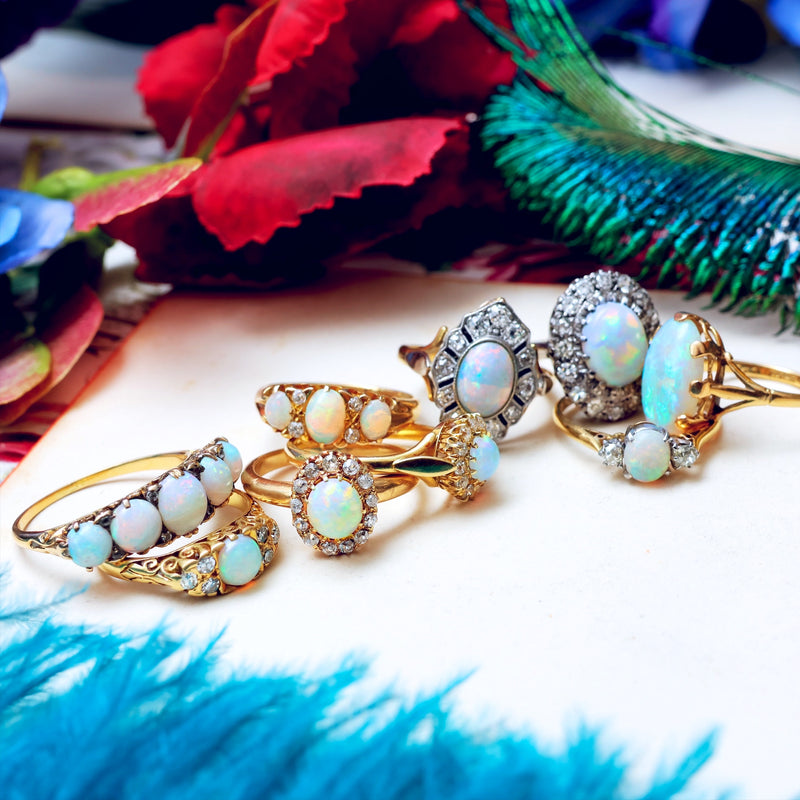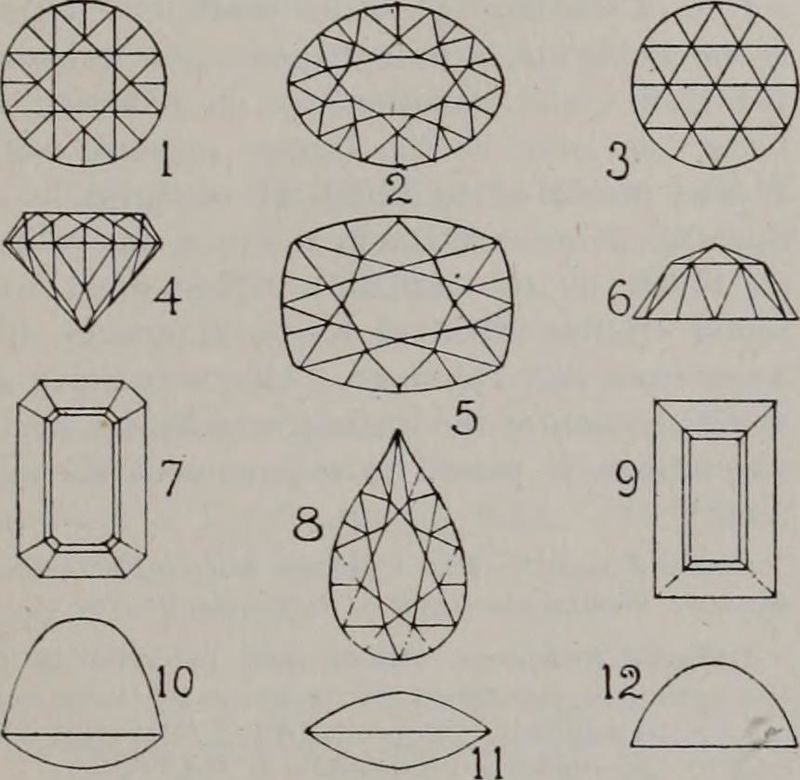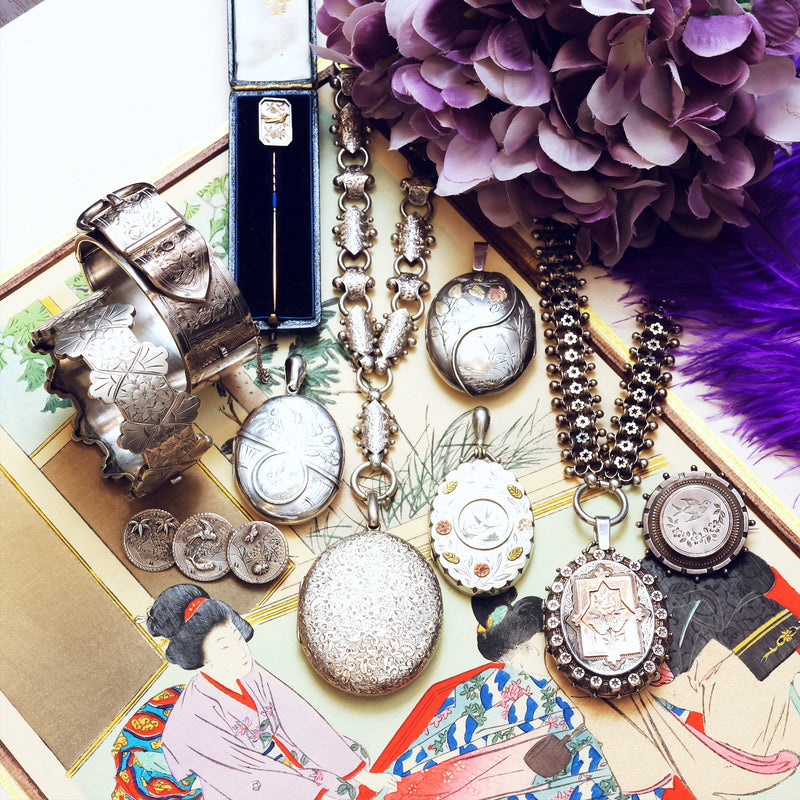
In times past considered a precious reminder of a loved one, to give a lock of hair was a token of friendship and love, a strand of hair kept safe in a locket an intimate expression of esteem.
Many antique mourning and sentimental jewels too contain a locket compartment home to a beautifully plaited lock of hair, and as human hair does not decay over the years, this was a touching way to preserve something tangible of a person who had passed.

Intricately woven and knotted hair could also be crafted into three dimensional jewellery made entirely of hair such as chains and elaborate brooches, earrings etc, etc. Each a treasured memory which could bring comfort. Some of the designs you’ll see are really incredible, and a great deal of skill and patience would have been needed to fashion miniature floral wreaths and braided necklaces etc
There were many hair working businesses who could expertly mount your beloved’s hair for you, but during the Victorian era, with the growth of the idea of Mourning, many began to try this craft at home, and instruction manuals could be purchased for this kind of ‘fancy work’.

Taken from the wonderful two volume book by Shirley Bury, ‘Jewellery 1789-1910’ pp 680 and the articles she quotes from ‘Englishwomen’s Domestic Magazine’ of 1871 and 1872 which were written or inspired by Mrs Alexanna Speight who was a Hairworker with premises in the Soho Bazaar, London who had many prestigious clients including Princess Beatrice and wrote both historical and instruction manuals on the subject. Mrs Speight also sold kits and fittings in which to mount hand made pieces.
If you fancy trying this at home, to begin with one would need a set of tools…which could be purchased as a kit, from Mrs Speight and included;
‘a set of curling irons or tongs, scissors, a knife, tweezers, fine brushes, a bottle of gum, a crescent-shaped bone implement, a reel of Gold wire, a weight, a packet of Pearls, gold beater’s skin, paint and a white palette.’
Once you have all these ready….

‘The first task was to clean the hair by immersing it in half a teacup of hot water in which borax or soda had been dissolved. The hair was left in the solution for a few minutes and then removed and transferred to the palette, where it was firmly scraped with a knife to remove impurities. After being soaked again in a fresh solution of borax and water the hair was returned to the palette and trimmed to leave one end projecting slightly beyond the end of the palette itself. This enabled it to be lifted by the tongs without being disarranged. Mrs Speight gave instructions for making several devices, including the ever popular curl.'
'In order to produce it, the executants grasped the end of the hair with one hand and manipulated the tongs with the other, winding the hair three times round the tongs. A spirit lamp or candle flame was used to heat the exposed metal of the tongs. The transferred heat caused the hair to steam but not to scorch. At this stage the curl was moistened slightly to prevent it from coming apart when removed from the tongs with a knife and again carried to the palette.’
‘The next operation was to secure both ends of the curl with gum. A thin line of adhesive was applied to the palette with a camel hair brush and the head of the curl lifted on to it with the aid of the brush. It was advised that a needle dipped into the gum be inserted under the head or turn of the curl while it was held firmly down with the forefinger, after which pressure was applied for an hour to ensure that the gum dried in place. The tail end was similarly treated. The palette was then warmed and the stiffened curl removed with the knife and gummed ‘to the tablet’ or support where it was to remain.’

‘Gold wire, twisted into a double filament cord, was wound round a needle or similar tapering instrument, the resultant spiral being flattened with the bone crescent. The gold ‘filigree’ and the pearls which so often accompanied the curl had also to be glued down, the pearls having first been split into two halves by being forced through a hole marginally smaller than their own circumference.’
We’d love to see your arrangements!
The art of working with hair in this way hasn't completely died out, and in 1994, the Hairworkers Society was founded by the most active hair workers. Some current hair workers include...
research of The Society of Hairworkers
It is interesting and affecting that many of these pieces have survived longer than the memories, and you can read more on this interesting subject at these links below;
You can read Mrs Speight's book 'A LOCK OF HAIR' 1872 online here.
http://www.dilettantearmy.com/articles/general-access
https://www.cooperhewitt.org/2014/05/28/treasured-tresses-hair-jewelry-pattern-books/



